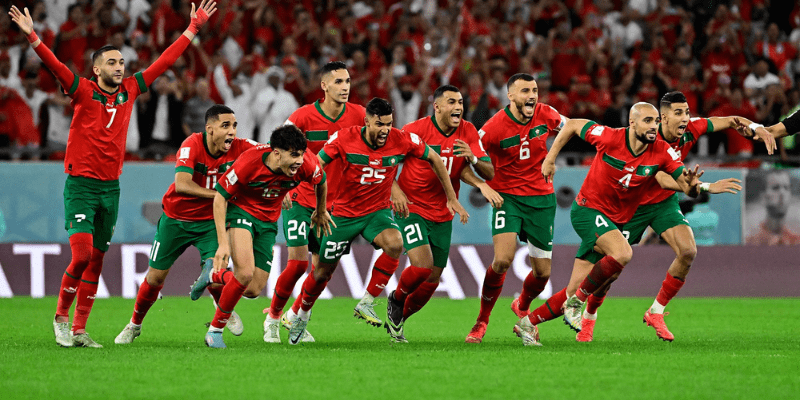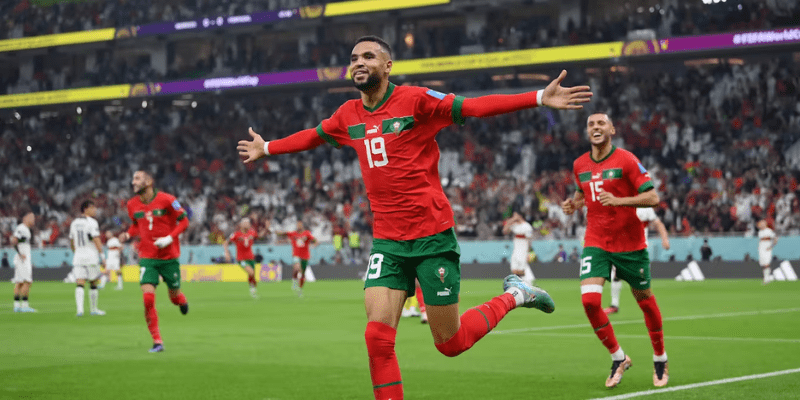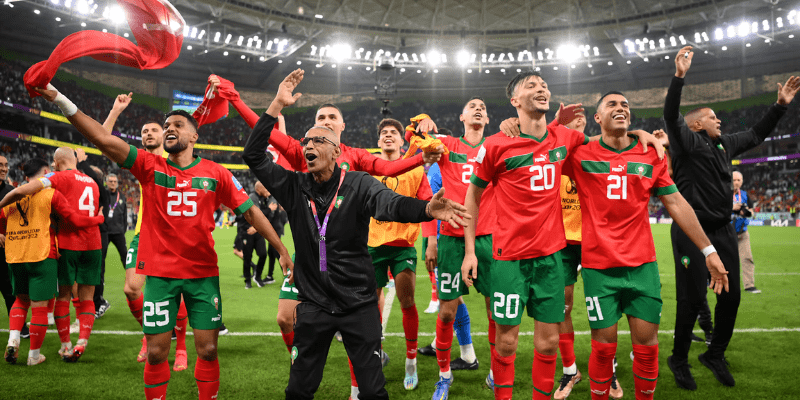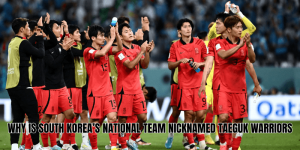From the dusty pitches of Casablanca to the world-stage of football folklore, one match still stands tallest in the annals of Moroccan football: the biggest win in Morocco national team history. It was on 6 September 1961, in a Pan-Arab Games showdown held in Casablanca, that Morocco delivered an emphatic 13-1 thrashing of Saudi Arabia. That night, the Atlas Lions roared louder than ever.
In this article, ZaneyStrike will guide you through the full story: the context of that match, how it compares to other huge results in Morocco’s history, what made it possible, and whether any modern team could dare to replicate it.
Historical context and match overview

Why 1961 mattered
In 1961, Morocco was still in the early stages of carving its identity on the international scene. The Royal Moroccan Football Federation had joined FIFA only a year earlier, and national competitions and exposure were limited. The Pan-Arab Games offered an opportunity for Morocco to present itself to regional rivals, build momentum, and test its growing talent pool.
That year, the football tournament of the Pan-Arab Games was held in Casablanca, giving Morocco a home advantage and an impetus to shine in front of its supporters. The national team was eager not just to compete, but to dominate.
The 13-1 rout: match facts and breakdown
The match took place at the Stade Mohammed V in Casablanca on 6 September 1961. Morocco faced Saudi Arabia in a group stage fixture of the Pan-Arab Games. The result was a staggering 13–1 victory for Morocco — still the biggest win in Morocco national team history.
Key details include:
- It was a home match for Morocco, giving them crowd support and familiarity with the pitch.
- Morocco’s offense was ruthlessly efficient; their defenders also held strong to limit Saudi Arabia to just one goal.
- This win came in a regional tournament, not under FIFA’s World Cup or continental tournament umbrella — though it remains officially recorded in Morocco’s national statistics.
In recounting later histories, Morocco’s own records list this 13–1 as the largest victory in the national team’s history.
Comparison with other major Morocco victories
While 13–1 is untouchable to date, Morocco has recorded several other commanding wins. Here’s how they stack up:
- 7–0 vs Togo (17 June 1979) — One of the larger margins in Moroccan matches recorded.
- 7–0 vs Zaire (29 August 1996) — Another dominant outing in a friendly or regional fixture.
- 7–0 vs Lesotho (18 November 2024) — Among the more recent high-scoring games.
- 6–0 vs Armenia, 6–0 vs Gabon, 6–0 vs Mali — Morocco has visited the 6-goal cushion several times over decades.
These performances highlight that Morocco’s football pedigree includes moments of dominance. But none have approached the scale of that 13-1 night.
In the realm of major international tournaments (World Cup, AFCON), Morocco’s biggest wins are considerably more modest — a handful of goals rather than double digits — showing how the intensity and caliber of competition ratchet up in those stages.
What made 13–1 possible: factors behind the margin

Such blowouts rarely emerge by accident. Several contributing elements likely aligned that day:
Quality disparity
In 1961, Saudi Arabia’s national football program was less developed than Morocco’s. This gap in experience, tactics, and infrastructure would have given Morocco a significant edge.
Home advantage and morale
Playing in Casablanca, Morocco had full support. Tactical boldness
The Moroccan coach and players must have attacked relentlessly, capitalizing early on weaknesses in the Saudi defense. When things go right, momentum feeds momentum — goals breed goals.
Psychological collapse of opponent
Conceding repeatedly can drain confidence. Once Saudi Arabia fell behind, their defensive structure likely disintegrated under pressure.
Game context and stakes
As a group game in a regional tournament, goal difference mattered. Morocco may have pushed non-stop to maximize their advantage, rather than easing off after securing a lead.
Legacy and significance today

That 13-1 result remains more than a trivia footnote — it’s a symbol, a benchmark, a statement of intent from Moroccan football’s formative years.
- National record holder: It stands as the official largest win in Morocco’s national history, and has been referenced repeatedly in records and statistics.
- Cultural lore: Fans and historians remember it as a night when the stars aligned, and the country’s footballing promise was embossed in legend.
- Inspiration for youth: In modern times, when Morocco takes on tough fixtures — whether in World Cup qualifiers or AFCON — this record serves as a reminder of what’s possible when everything clicks.
Could current or future squads replicate that scale? In the modern era, football is far more competitive, balanced, and physically demanding. Blowouts of that nature are extremely rare in top international play. Yet for Morocco, chasing greatness means always reaching, always pushing boundaries.
Conclusion
The biggest win in Morocco national team history is more than an isolated result — it’s a defining moment that echoes through decades of Moroccan football. On 6 September 1961, Morocco humbled Saudi Arabia 13–1 in a statement of dominance, setting a record that still stands unchallenged.
If you’ve enjoyed this deep dive with ZaneyStrike into Morocco’s golden night, stay tuned: we’ll be exploring other records, match stories, and rising stars in Moroccan football. Want to explore the biggest loss, best players, or national team evolutions? Just tell me — I’ll bring the facts, drama, and soul straight to your screen.






